Overview of Application and Advantages of Garbage Recycling Windshifter
1).The waste windshifter is a kind of equipment used for solid waste treatment. It mainly utilizes the principle of aerodynamics to separate different components in waste according to characteristics such as weight or density.
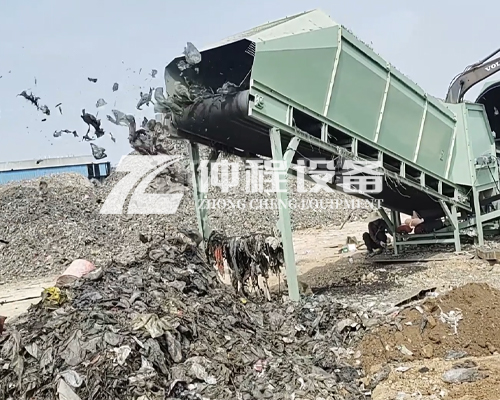
2).Working Principle
1.It is based on the interaction between materials and air. After the waste is conveyed to the feed inlet of the windshifter, under the action of the air flow generated by the blower, lighter materials (such as paper, plastic films, etc.) will be carried away by the air flow, while heavier materials (such as metals, stones, glass, etc.) will settle due to the effect of gravity.
2.For example, in the treatment of municipal solid waste, light waste such as plastic garbage bags and food packaging bags can be blown to a higher position under an appropriate wind speed and separated from heavier kitchen waste (such as bones, fruit peels, etc.) and inorganic substances (such as ceramic fragments).
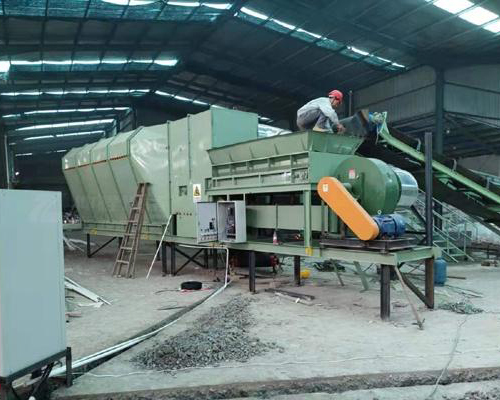
3).Main Structural Components
1.Feed Device: It is responsible for evenly feeding the waste into the windshifter. Its design should ensure a stable feeding speed and quantity of waste to avoid poor wind separation results caused by uneven feeding.
2.Blower System: This is a key part for generating air flow. Parameters such as the air volume and air pressure of the blower can be adjusted according to the types and treatment amounts of waste. Appropriate air flow speed is crucial for accurately separating waste with different densities.
3.Separation Chamber: Waste is separated by wind selection in this space. The shape, size and internal structure of the separation chamber (such as whether there are guide plates, etc.) will affect the distribution of air flow and the movement trajectory of waste, thus influencing the separation effect.
4.Light Material Collection Device: It is used to collect the light materials carried away by the air flow. Usually, light materials are collected into specific containers through pipes or cyclone separators and other equipment.
5.Heavy Material Collection Device: It is located at the bottom of the separation chamber and is used to collect the settled heavy materials. These heavy materials can be transported to subsequent treatment processes by conveyor belts or other conveying equipment.
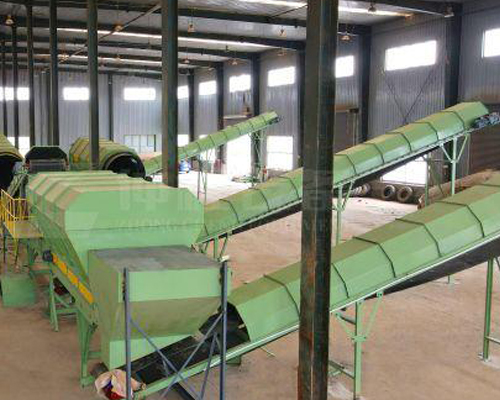
4).Application Scenarios
1.Municipal Solid Waste Treatment: It can effectively separate lightweight recyclable materials (such as plastics and paper) from other waste, improving the recycling utilization rate of waste. This helps to reduce the amount of waste landfilled and lower environmental pollution.
2.Construction Waste Treatment: It can separate impurities such as wood and plastics from construction waste, making the construction waste purer and facilitating its subsequent recycling and reuse, for example, the production of recycled aggregates.
3.Industrial Slag Treatment: For the mixed slag produced in some industrial production processes, the windshifter can separate light substances (such as fibers, foams, etc.) from heavy metal slag or mineral slag, creating conditions for the further treatment and resource recovery of the slag.
5).Advantages
1.Efficient Separation: It can quickly and effectively separate different components of waste with different densities, improving the efficiency of waste treatment.
2.Environmentally Friendly and Energy-Saving: Compared with some chemical separation methods, the windshifter mainly relies on aerodynamic power, with relatively low energy consumption and no chemical pollution.
3.Simple Equipment Maintenance: Its structure is relatively simple, without complex chemical or mechanical treatment parts. Therefore, it is relatively convenient in daily maintenance and repair, reducing the operating cost of the equipment.
6).Parameter
| windshifter 800 | windshifter 1200 | windshifter1600 | |
| Feeding Belt Width | 800mm | 1200mm | 1600mm |
| Air volume | 8000-19000 m³/h | 12000-29000 m³/h | 15000-35000 m³/h |
| Full pressure | 2500Pa | 2500Pa | 2500Pa |
| Power | 38kw | 42kw | 55kw |
| Throughput | 20-30 m³/h | 30-50 m³/h | 50-70 m³/h |
-
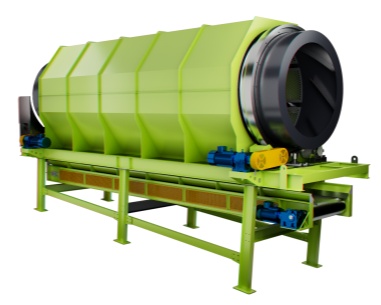 Trommel screenTrommel screen, also known as drum screens, are widely used in various industries for sorting and separating materials.Get Quote
Trommel screenTrommel screen, also known as drum screens, are widely used in various industries for sorting and separating materials.Get Quote -
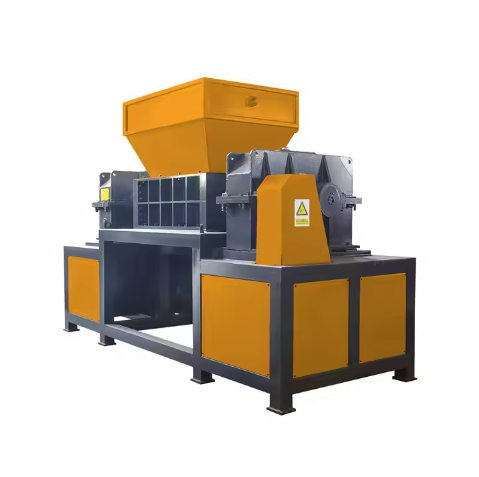 Crop straw double shaft shreddApplications:Biomass Energy Production: Shredded straw can be used as a feedstock for bioenergy plants to produce electricity or heat.Livestock Feed: Reduced-si...Get Quote
Crop straw double shaft shreddApplications:Biomass Energy Production: Shredded straw can be used as a feedstock for bioenergy plants to produce electricity or heat.Livestock Feed: Reduced-si...Get Quote -
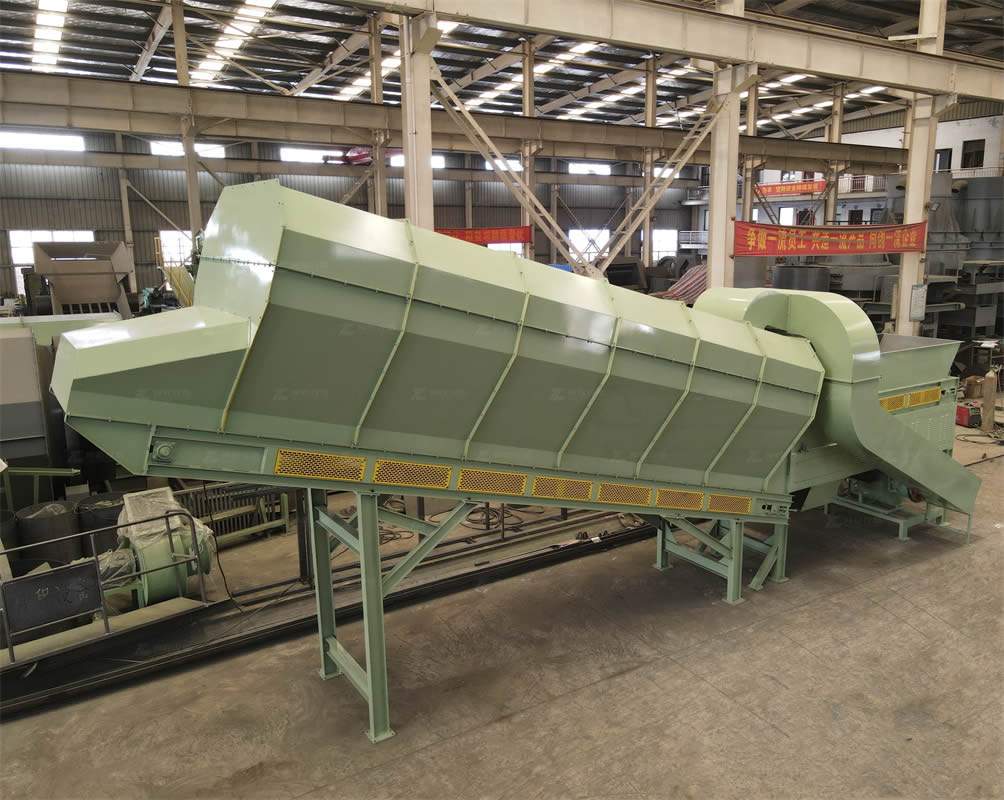 Zhongcheng Air Drum SeparatorAir drum separators effectively separate lightweight materials (e.g., plastics, paper) from heavier materials (e.g., metals, glass). This high efficiency is cru...Get Quote
Zhongcheng Air Drum SeparatorAir drum separators effectively separate lightweight materials (e.g., plastics, paper) from heavier materials (e.g., metals, glass). This high efficiency is cru...Get Quote
-
2023-01-12Conveyor BeltGarbage conveyor/Trash conveyor belt system is a processing line to classify paper, plastic, metal, glass, and organic matter and realize the recycling of rubb...
-
2024-05-29Landfill stale garbage screening projectAfter communicating with our domestic customers in Shandong Province, we learned that he needed to dispose of the garbage in the landfill through excavation, sc...
-
2024-07-10msw trommel screen for waste recycling machineThis equipment is suitable for the particle classification process in all walks of life:The equipment is simple, easy to operate,and can be operated with a larg...
-
2024-06-09Drum Screen RecyclingDrum screen machines are primarily used for material screening, helping to sort and recycle municipal solid waste and screen landfill waste. Their efficiency an...
-
2023-01-13Bag OpenerBag opener or bag opener system is a mechanical device used to automatically open and empty bags containing bulk materials. This system is commonly used in indu...



